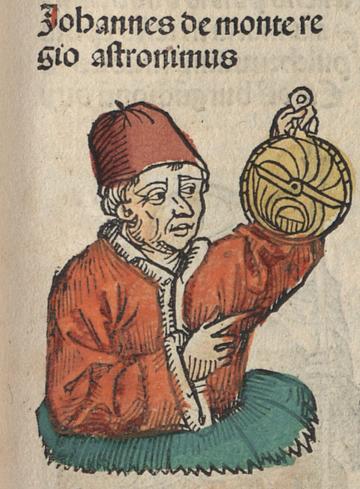Series Convenors: Dr Alex Aylward, Professor Erica Charters, Professor Mark Harrison, Dr Catherine M Jackson, Dr Sloan Mahone

Regiomontanus with an astrolabe, from Hartmann Schedel’s Nuremberg Chronicle (1493), Credit: Bayerische Staatsbibliothek CC BY-NC-SA 4.0
Seminars in the History of Science, Medicine, and Technology
Dr Stephen Johnston (University of Oxford)
Material culture and mathematical practice in astrology’s long 16th century
From Istanbul to Milan, astrology was an established feature of many late medieval royal courts. General prognostications were drawn up for the year ahead, nativities specially cast for the birth of princes, and interrogations and elections created to determine specific questions and choose advantageous dates for events – all requiring a specific set of mathematical skills. This common astrological culture across the Islamic and Christian worlds progressively diverged from the late 15th century, less due to intellectual change than through new materials and media expanding the art’s appeal and its European audiences. Printing enabled the mass production of bulky volumes of ephemerides, while cheap broadsides and practica opened up a popular market overlapping with prophecy. This shift in European textual production was accompanied by instrumental transformation, with simplified astrolabes targeting astrological use and specific astrological techniques increasingly engraved on 16th-century instruments. This paper explores both astrology’s shifting material culture and the stability of its mathematical practice in the “long 16th century”, from Regiomontanus’ printing prospectus of c. 1472 to the dramatic novelties of Galileo and Kepler.